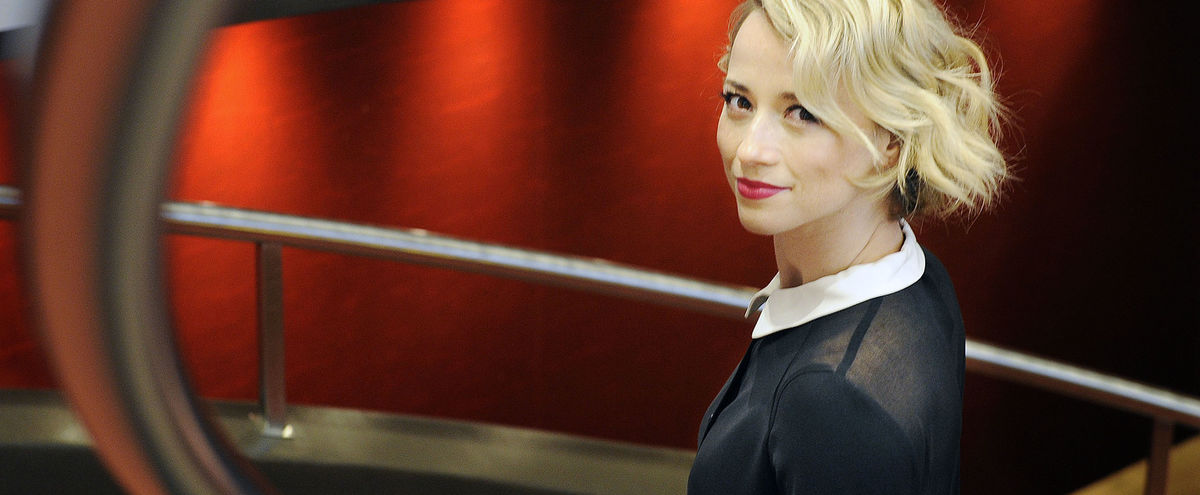
A Short Story about 10 Years International Uranium Film Festival 2011 to 2020
The International Uranium Film Festival (IUFF) - since 2016 also known as Atomic Age Cinema Fest - was founded in 2010 in Rio de Janeiro and took place for the first time in May 2011 in two historical cultural centres in the bohemian quarter Santa Teresa. It was a successful start that attracted especially schools with hundreds of students and teachers. In addition the festival received invitations from all over the world.
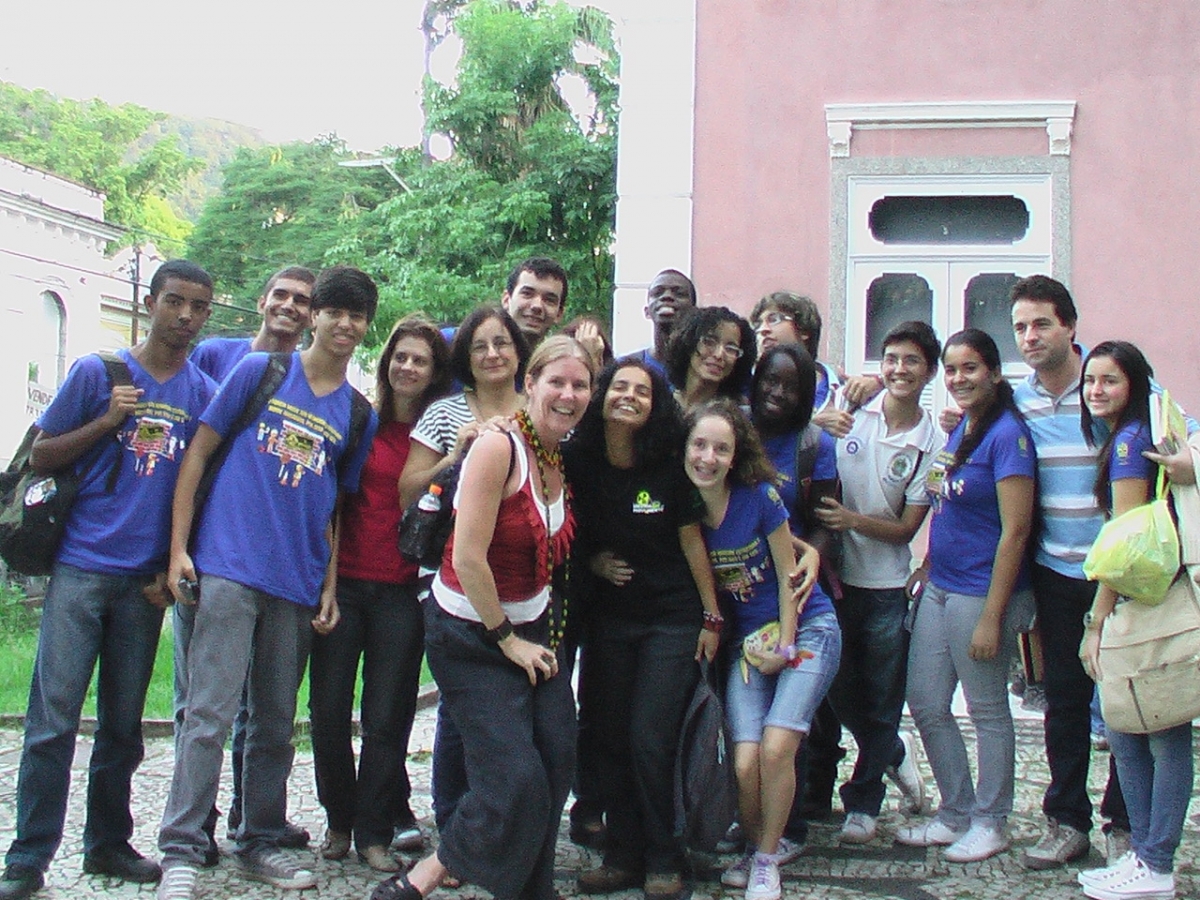 The jury selection for the Best Feature Documentary was “Into Eternity“ by Danish director Michael Madsen. The film takes the audience down thousands of meters into a rock formation of Finland where the world’s first high-level nuclear waste storage facility is being built and asks the question: Is it safe? The Best Short Documentary was “Uranium 238: The Pentagon’s Dirty Pool“, a Costa Rican production from director Pablo Ortega of the University of Costa Rica about the nature, use and consequences of Depleted Uranium weapons (DU).
The jury selection for the Best Feature Documentary was “Into Eternity“ by Danish director Michael Madsen. The film takes the audience down thousands of meters into a rock formation of Finland where the world’s first high-level nuclear waste storage facility is being built and asks the question: Is it safe? The Best Short Documentary was “Uranium 238: The Pentagon’s Dirty Pool“, a Costa Rican production from director Pablo Ortega of the University of Costa Rica about the nature, use and consequences of Depleted Uranium weapons (DU).
“In my 25 years as an anti-DU activist this experience has been a highlight in the exposure of a very serious problem that faces mankind today – the use of radioactive waste as a military weapon,” said Damacio Lopez, the executive director of the International Depleted Uranium Study Team, who presented the 28 minute film together with producer Isabel Macdonald. A huge honour and special surprise was the outstanding short film „Atomic Bombs on Planet Earth” that famous Peter Greenaway has send to us to our first Internatinonal Uranium Film Festival. Peter Greenaway’s film received the Hors Concours Award of the Uranium Film Festival in the following year.
Since 2012, Rio de Janeiro’s prestigious Modern Art Museum (MAM Rio) became Uranium Film Festival partner and its Cinematheque our main venue. In addition the festival travelled in 2012 to Portugal and conquered Berlin to become the festival's second home. From India awarded filmmaker Shri Prakash has come to Berlin to present his master piece „Buddha Weeps in Jadugoda“ about the shocking consequences of uranium mining in India. And one thing came to another. Shri Prakash became part of the festival’s growing „nuclear family“ and organized with us in the following year an outstanding 10 cities festival tour through India from New Delhi to Hyderabad and Mumbai, that he could repeat in 2014. Tollywood film star and activist Amala Akkineni from Hyderabad honoured the Uranium Film Festival twice with her presence.
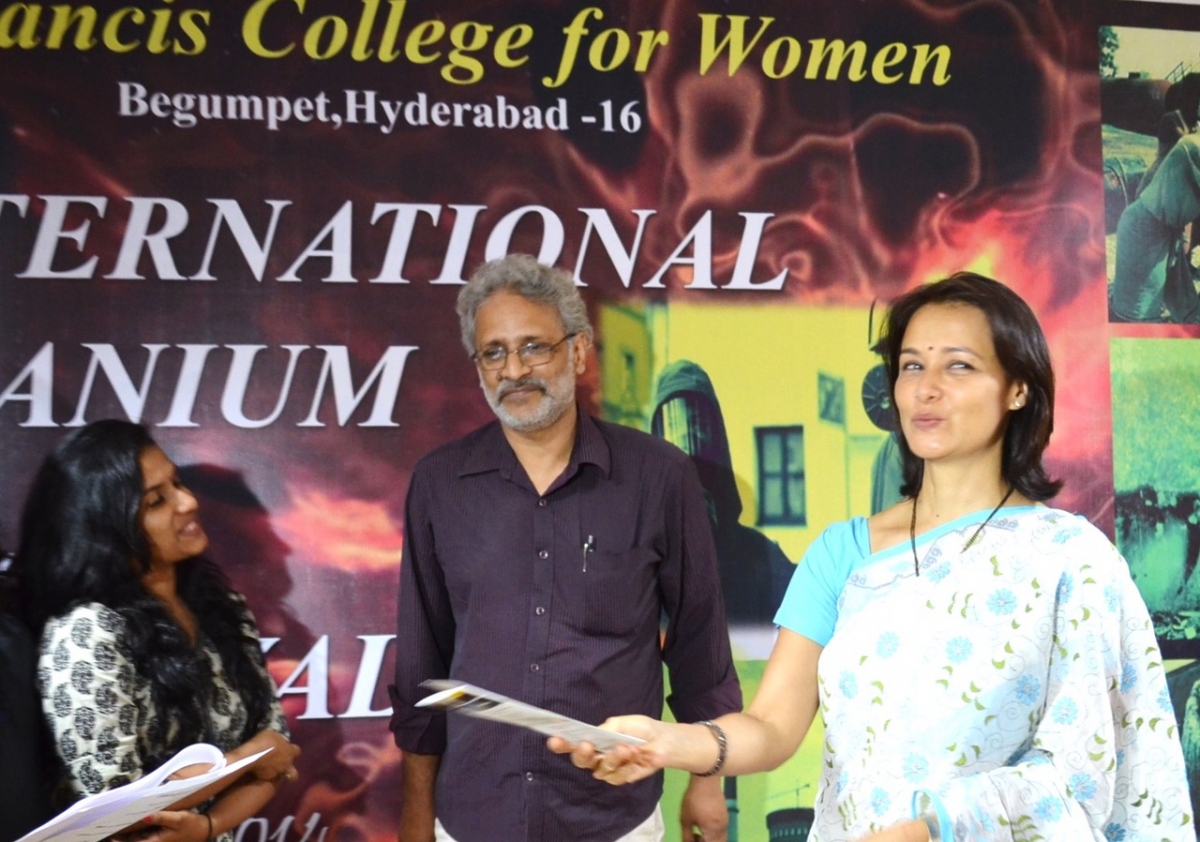 The opening of the Uranium Film Festival 2013 with Amala Akkineni in Hyderabad was truly magical. It was an open air event in the city centre in the evening. We showed the fantastic documentary 'Into Eternity' about the Onkalo nuclear repository project while hundreds of fruit bats flew over the scenery into the darkened evening sky.
The opening of the Uranium Film Festival 2013 with Amala Akkineni in Hyderabad was truly magical. It was an open air event in the city centre in the evening. We showed the fantastic documentary 'Into Eternity' about the Onkalo nuclear repository project while hundreds of fruit bats flew over the scenery into the darkened evening sky.
Shri Prakash remembers: “The most moving and humbling moment of the festival was when a young student in Hyderabad shed tears and with a lump in her throat said, she felt betrayed by her upbringing and education which kept her in dark about dark issues as this. She said, till her participation in the festival she had no idea, not even remotely close, about such cruel and inhumane things happening in the world and shaking the world while she was breathing the same air in the very same world.“
In Ranchi, the capital of India’s uranium mining state Jharkhand, the Adivasi people were the stars of the festival. For decades the Adivasi suffer from uranium mining in Jadugoda. So the Uranium Film Festival presented the work of young adivasi photographer Ashish Birulee for the first time to a wider public. „My photo exhibition `Jadugoda Unumo Tana: Drowning In Nuclear Greed´ was a great success“, remembers Ashish Birulee. „I became the first Adivasi from Jharkhand to exhibit my photos at an international platform. The exposure which I received led me to more national and international photo exhibitions.
In addition to India the Uranium Film Festival was also held 2013 for the first time in Window Rock, the capital of the Navajo (Diné) Nation thanks to the support of the Seventh Generation Fund for Indigenous Peoples. Navajo Nation President Ben Shelly opened the festival in the Navajo Nation Museum and remembered the deadly legacy of uranium mining on Navajo lands. From 1944 to 1986, nearly 30 million tons of uranium ore were extracted from Navajo lands. Today the mines are closed, but a legacy of uranium contamination remains, including over 500 abandoned uranium mines as well as radioactive contaminated homes and fresh water springs.
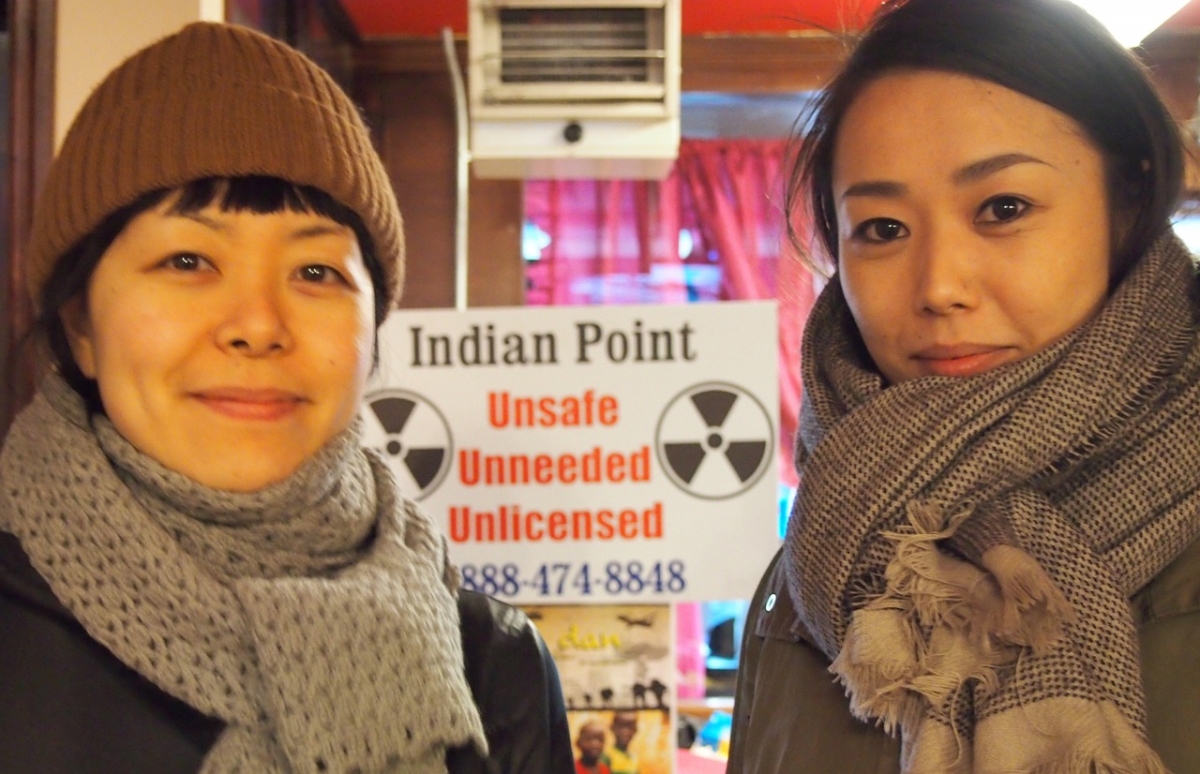 A real „Winter’s Tale“ was our festival in New York City. The Uranium Film Festival In New York was organized in cooperation with Peace Boat US in Brooklyn in extremely cold and snowy February 2014. The venue was the historical film theatre "The Pavilion". Although the heating of the cinema was out of service because of a snow break, New Yorkers from all parts of the city came to the festival to watch the films wrapped up in coats and scarves. Peace Boat volunteer staff Rachel Clark reported: „Living in Metropolitan New York area, we often only see the threat of nuclear power plants to local residents, whose stances are from the viewpoint of both energy consumers and (potential) victims. At the Pavilion Theater, however, many audience members were shocked by the chaotic situation at the uranium production sites. Scenes depicting uranium mining workers in India and Africa working without any protective gear, bulldozers generating radioactive dusts and mounds of radioactive dirt in order to obtain just a handful of yellow cake—the extracted pure form of uranium— and radioactive toxic waste being dumped into rivers, ponds, and open air left a lasting impact.“
A real „Winter’s Tale“ was our festival in New York City. The Uranium Film Festival In New York was organized in cooperation with Peace Boat US in Brooklyn in extremely cold and snowy February 2014. The venue was the historical film theatre "The Pavilion". Although the heating of the cinema was out of service because of a snow break, New Yorkers from all parts of the city came to the festival to watch the films wrapped up in coats and scarves. Peace Boat volunteer staff Rachel Clark reported: „Living in Metropolitan New York area, we often only see the threat of nuclear power plants to local residents, whose stances are from the viewpoint of both energy consumers and (potential) victims. At the Pavilion Theater, however, many audience members were shocked by the chaotic situation at the uranium production sites. Scenes depicting uranium mining workers in India and Africa working without any protective gear, bulldozers generating radioactive dusts and mounds of radioactive dirt in order to obtain just a handful of yellow cake—the extracted pure form of uranium— and radioactive toxic waste being dumped into rivers, ponds, and open air left a lasting impact.“
In the following year the Uranium Film Festival was hosted by the Cree nation in Canada. Over 50 films from around the world were screened in Quebec City and Montreal over the 10 days of the festival, each telling a different story about the impact of uranium mining and the risks of the nuclear age. The Grand Council of the Crees (Eeyou Istchee) was the major partner for this year's festival, which drew some serious star power, with Quebec superstar Karine Vanasse (top photo) and Hollywood actor/environmentalist Ed Begley, Jr. in attendance for the opening gala on April 15, 2015.
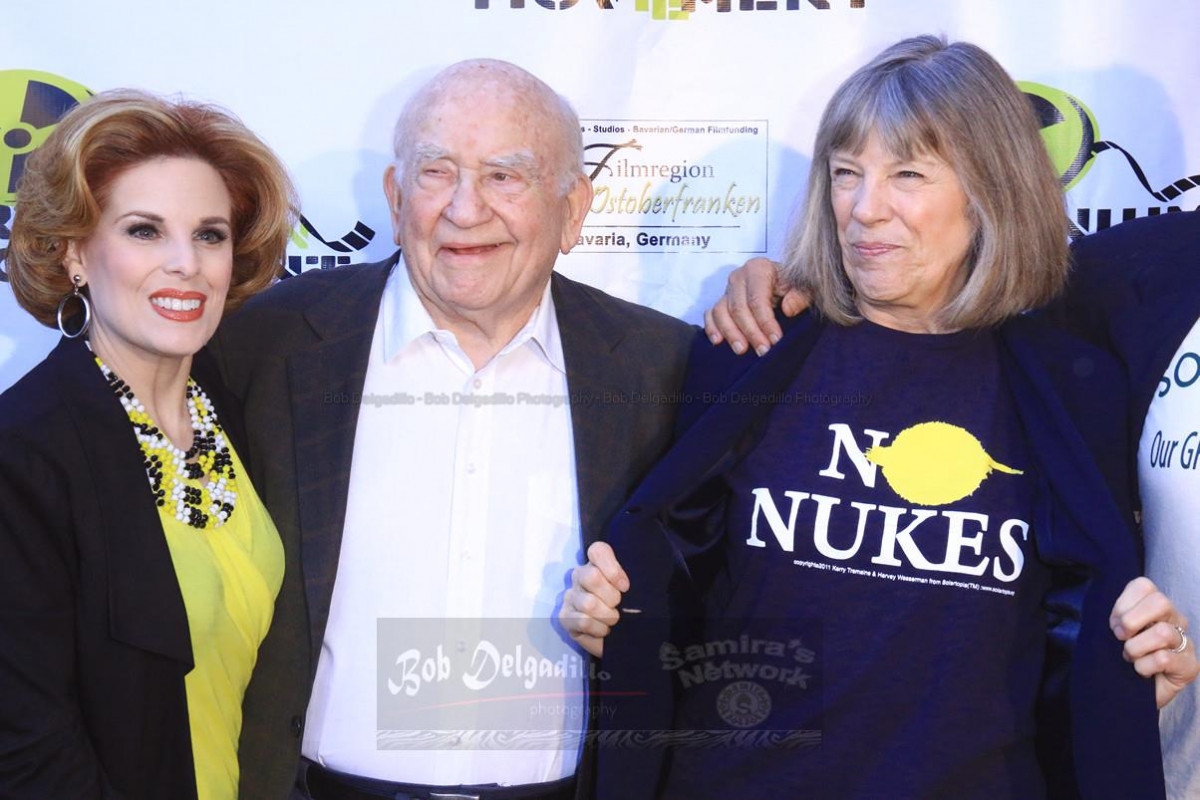 In partnership with Hollywood star Kat Kramer, founder of "Films That Change the World", the Uranium Film Festival reached Los Angeles in 2016 and achieved another mile stone. Venue was the Raleigh Studios, since 1915 home of film industry icons such as Charlie Chaplin, Douglas Fairbanks and Mary Pickford. The prestigious 160 seat Chaplin Theater at Raleigh Studios was filled to the last seat when the outstanding movies "The Man Who Saved the World“ by Peter Anthony with stars like Kevin Costner and "Nuclear Savage: The Islands of Secret Project 4.1“ by Adam Horowitz had their Hollywood premiere. The film screening was followed by a nuclear power panel mixed with stars and nuclear experts like Mimi Kennedy, Harvey Wasserman, Loe Gossett Jr., Kat Kramer, Esai Morales and Libbe HaLevy.
In partnership with Hollywood star Kat Kramer, founder of "Films That Change the World", the Uranium Film Festival reached Los Angeles in 2016 and achieved another mile stone. Venue was the Raleigh Studios, since 1915 home of film industry icons such as Charlie Chaplin, Douglas Fairbanks and Mary Pickford. The prestigious 160 seat Chaplin Theater at Raleigh Studios was filled to the last seat when the outstanding movies "The Man Who Saved the World“ by Peter Anthony with stars like Kevin Costner and "Nuclear Savage: The Islands of Secret Project 4.1“ by Adam Horowitz had their Hollywood premiere. The film screening was followed by a nuclear power panel mixed with stars and nuclear experts like Mimi Kennedy, Harvey Wasserman, Loe Gossett Jr., Kat Kramer, Esai Morales and Libbe HaLevy.
"The International Uranium Film Festival in Hollywood was - you should pardon the expression - a blast! Wonderful people came to watch the films and were blown away by what they viewed. `The Man Who Saved the World´ was, if anything, more impactful this second time I viewed it. Kudos to festival director Norbert G. Suchanek, in from his home in Rio, and local event producer Alexandra Radlovic for pulling together such a great event", said Libbe HaLevy, panelist and producer of the radio show Nuclear Hotseat. And Elena Nicklasson, director of Development of the Nuclear Age Peace Foundation commented: "I Loved this event! Great to see so many Hollywood stars supporting nuclear disarmament! The red carpet was amazing thanks to festival’s event producer Alexandra Radlovic."
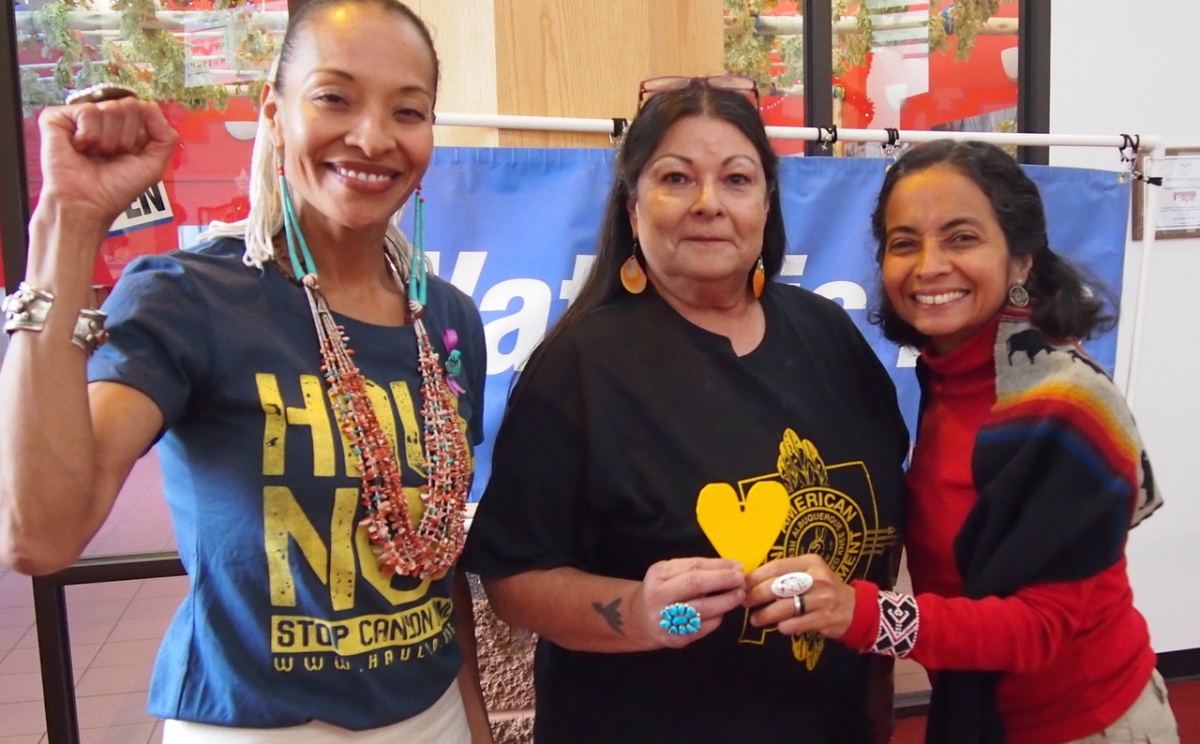 In 2018, the International Uranium Film Festival was held for the 2nd time in Window Rock at the Navajo Nation Museum in partnership with Navajo activist Anna Rondon and Susan Gordon from the Multicultural Alliance for a Safe Environment as co-organizers. One of the highlights was the performance of Navajo singer, songwriter and former Miss Navajo, Radmilla Cody remembering the catastrophic Church Rock uranium mill tailings dam breach in 1979: The breach released more than 1,000 short tons of solid radioactive mill waste and almost 400 million liters of acidic, radioactive tailings solution into the Puerco River. After Window Rock, the Uranium Film Festival toured through New Mexico and Arizona to Albuquerque, Santa Fe, Flagstaff, the uranium capital Grants and thanks to the Physicians for Social Responsibility Association Arizona also to Tucson.
In 2018, the International Uranium Film Festival was held for the 2nd time in Window Rock at the Navajo Nation Museum in partnership with Navajo activist Anna Rondon and Susan Gordon from the Multicultural Alliance for a Safe Environment as co-organizers. One of the highlights was the performance of Navajo singer, songwriter and former Miss Navajo, Radmilla Cody remembering the catastrophic Church Rock uranium mill tailings dam breach in 1979: The breach released more than 1,000 short tons of solid radioactive mill waste and almost 400 million liters of acidic, radioactive tailings solution into the Puerco River. After Window Rock, the Uranium Film Festival toured through New Mexico and Arizona to Albuquerque, Santa Fe, Flagstaff, the uranium capital Grants and thanks to the Physicians for Social Responsibility Association Arizona also to Tucson.
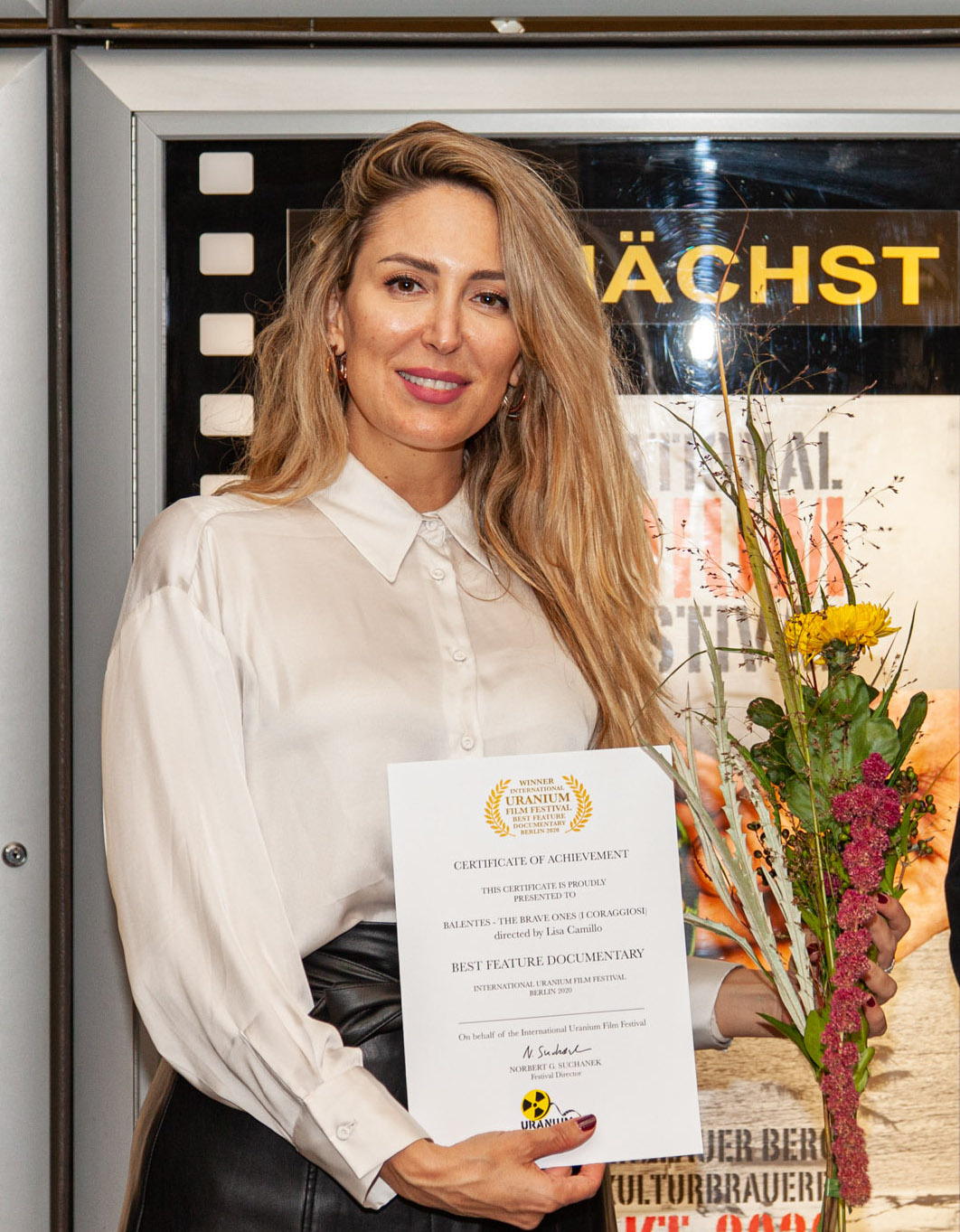 This year, 2020, the Uranium Film Festival was hit hard by the Corona-Virus-Epidemic. We had to cancel our planned events in Rio de Janeiro, Portugal and Spain. However under strict Coronavirus safety conditions and thanks to the long term partnership with ICBUW (International Coalition to Ban Uranium Weapons) und the support by Germans Federal Ministry for the Environment, Nature Conservation and Nuclear Safety we could held in October the Uranium Film Festival for the eight time in Berlin. Australian-Italian filmmaker Lisa Camillo presented her award winning documentary „Balentes - The Brave Ones“ in the CineStar-Cinema of the prestigious Kulturbrauerei. In addition director Lech Majewski from Poland won the Best Fiction Movie Award for his film „Valley of the Gods“ starring Josh Hartnett, John Malkovich and Bérénice Marlohe. „I am so glad, because it’s an amazing festival. Amazing in the quality of the films and the people, everybody connecting, people that believe what I believe, the fighting as well. It is incredibly hopefully that you know that you are not alone", said awarded filmmaker Lisa Camillo.
This year, 2020, the Uranium Film Festival was hit hard by the Corona-Virus-Epidemic. We had to cancel our planned events in Rio de Janeiro, Portugal and Spain. However under strict Coronavirus safety conditions and thanks to the long term partnership with ICBUW (International Coalition to Ban Uranium Weapons) und the support by Germans Federal Ministry for the Environment, Nature Conservation and Nuclear Safety we could held in October the Uranium Film Festival for the eight time in Berlin. Australian-Italian filmmaker Lisa Camillo presented her award winning documentary „Balentes - The Brave Ones“ in the CineStar-Cinema of the prestigious Kulturbrauerei. In addition director Lech Majewski from Poland won the Best Fiction Movie Award for his film „Valley of the Gods“ starring Josh Hartnett, John Malkovich and Bérénice Marlohe. „I am so glad, because it’s an amazing festival. Amazing in the quality of the films and the people, everybody connecting, people that believe what I believe, the fighting as well. It is incredibly hopefully that you know that you are not alone", said awarded filmmaker Lisa Camillo.
In total, over the past 10 years we have organized more than 60 uranium film festivals in seven countries and screened about 300 films on nuclear power and radioactive risks in more than 40 cities. With more generous contributions from sponsors and private backers we could have organized even more festivals in all important cities and capitals in the world. Join us! Become part of the Uranium Film Festival's nuclear family of partners and supporters - for the next ten successful years.
Norbert G. Suchanek & Márcia Gomes de Oliveira
DONATE with PayPal
Contact International Uranium Film Festival Rua Monte Alegre 356 / 301 Rio de Janeiro/RJ CEP 20.240-194 / Brasilien info@uraniumfilmfestival.org Others about International Uranium Film Festival Berlin Uranium Film Festival: Art vs the Apocalypse - http://redgreenandblue.org/2017/12/27/berlin-uranium-film-festival-art-v... Uranium Film Festival in New York - https://peaceboatusoffice.wordpress.com/2014/02/19/introducing-the-inter... Uranium film festival of Brazil - https://www.socialdoc.net/magnus/2011/06/02/uranium-film-festival-of-bra... Nuclear Hotseat: Nukes Go Hollywood – International Uranium Film Festival - http://nuclearhotseat.com/2016/05/04/nuclear-hotseat-254-nukes-go-hollyw...Nuclear Hotseat: QUEBEC SPECIAL: - http://nuclearhotseat.com/2015/04/22/nuclear-hotseat-200-quebec-special-... Nuclear Hotseat: Navajo Nation - http://nuclearhotseat.com/2018/12/12/explosive-films-on-nuclear-uranium-...




